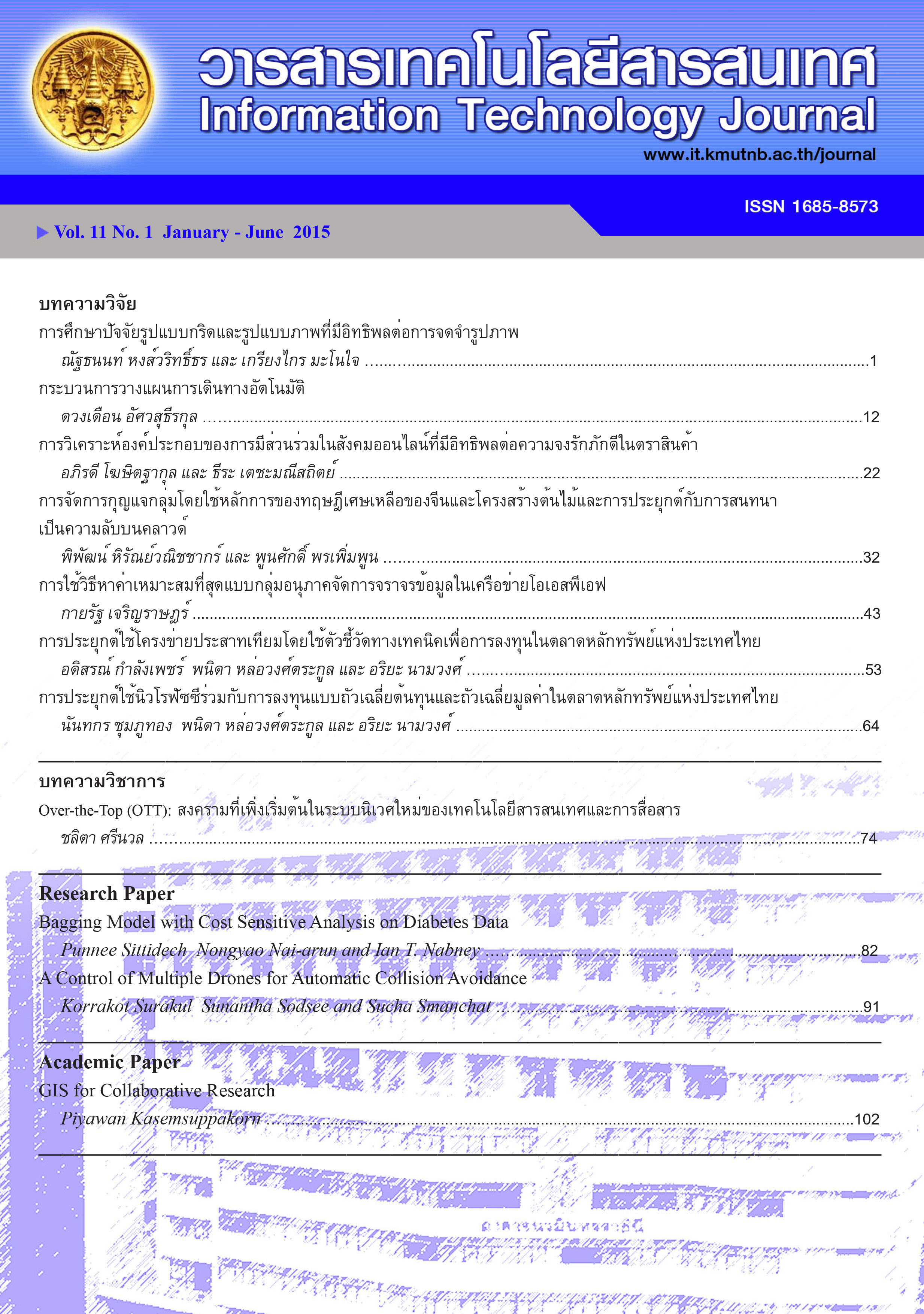การประยุกต์ใช้นิวโรฟัซซีร่วมกับการลงทุนแบบถัวเฉลี่ยต้นทุน และถัวเฉลี่ยมูลค่าในตลาดหลักทรัพย์แห่งประเทศไทย
Main Article Content
Abstract
การลงทุนแบบถัวเฉลี่ยต้นทุนและถัวเฉลี่ยมูลค่าเป็น กลยุทธ์การลงทุนแบบพื้นฐานที่นักลงทุนนิยมใช้ การลงทุน แบบถัวเฉลี่ยต้นทุนเป็นวิธีการช่วยลดความเสี่ยงที่เกิดจาก การลงทุนด้วยเงินจำนวนมากในครั้งเดียว การลงทุนแบบ ถัวเฉลี่ยมูลค่าเป็นเทคนิคการควบคุมมูลค่าสุทธิของพอร์ต การลงทุนให้เพิ่มขึ้นอย่างสม่ำเสมอ การศึกษาครั้งนี้มี วัตถุประสงค์ในการสร้างตัวแบบที่มีประสิทธิภาพ ด้วยการ ประยุกต์ใช้นิวโรฟัซซีร่วมกับการลงทุนแบบถัวเฉลี่ยต้นทุน และถัวเฉลี่ยมูลค่า เพื่อให้นักลงทุนได้รับผลตอบแทนเพิ่ม มากขึ้น โดยข้อมูลที่ใช้ในการศึกษาและพัฒนาครอบคลุม ระยะเวลา 10 ปี 9 เดือน นับตั้งแต่เดือนมกราคม พ.ศ. 2546 ถึงเดือนกันยายน พ.ศ. 2556 รวม 2,629 วันทำการ ข้อมูล หลักทรัพย์ที่นำมาใช้ในการศึกษาประกอบด้วยหลักทรัพย์ที่ อยู่ในดัชนี SET 50 ของตลาดหลักทรัพย์แห่งประเทศไทย จากผลการทดลองพบว่าการลงทุนแบบถัวเฉลี่ยมูลค่าด้วย การประยุกต์ใช้นิวโรฟัซซี ได้รับผลตอบแทนจากการลงทุน สูงที่สุด ด้วยอัตราผลตอบแทนร้อยละ 39.49
A Neuro-Fuzzy with DCA and VA for Stock Investment: Application to the Stock Exchange of Thailand
Nunthakorn Chumpootong, Panida Lorwongtrakool and Ariya Namvong
Dollar cost averaging (DCA) and value averaging (VA) are classical strategies used by many investors. DCA is an investment strategy for reducing the impact of one time large purchasing. VA is a technique used to guide the amount of investment into a portfolio over the time. This study attempted to develop more efficient models based on these two mentioned strategies. A neuro-fuzzy model was applied to DCA and VA with the intention of improving yield for investors. The study period covers 10 years and 9 months from January 2008 to September 2013 having 2,629 trading days. The daily trading data of the stocks that were included in SET50 from the stock exchange of Thailand were used in the stock trading simulation. The experimental results show promising for neuro-fuzzy-based VA achieving mean annual capital gain yield of 39.49%.


